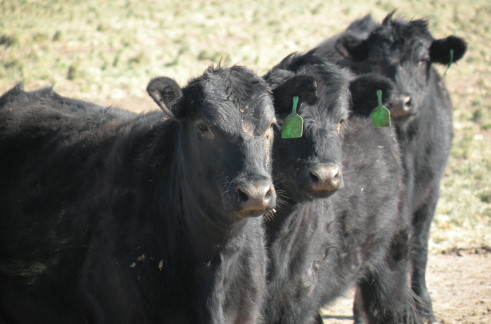
Agricultural News
The Disconnect and Limits to Beef Crossbreeding
Mon, 14 Nov 2011 16:14:43 CST
 Common sense makes it clear: simplicity rules. However, ranching profitability is a model of complexity.
Common sense makes it clear: simplicity rules. However, ranching profitability is a model of complexity.
"Conventional wisdom says crossbreeding equals extra pounds and more revenue at sale time, but those assumptions are often too simplistic," says animal scientist Nevil Speer.
The Western Kentucky University professor recently authored a research paper titled "Crossbreeding: a free lunch, but at what cost?"
Speer's analysis points to incremental changes in marketing, capital and cost management, and increasingly accurate genetic tools to help explain why long-established research that supports crossbreeding has failed to make a case for profitability. Why have so many left the beef industry's last "free lunch" on the table? No doubt, properly planned, well-executed crossbreeding can add maternal benefits and more weaning weight in most environments, but Speer says the qualifiers mean it's no open-and-shut case.
"If we avoid this topic in animal science, it's because we don't have enough training in economics and business." More pounds, more dollars? "It's just never that simple," he says.
Strategic marketing
Historically, the "pounds equal profit" paradigm gained ground on its perceived operational efficiency. It took little effort to introduce a Continental bull into an English herd and increase output. However, the slight effort often led to a "problem solved" level of thought.
"We started crossbreeding, but it wasn't often well-designed or systematic," Speer says. "It was just a haphazard approach, and that's no good. There was this perception that crossbreeding would fix everything, regardless of the genetics we put into the system."
That approach became hazardous as beef consumers grew more discriminating in the 1990s. Commodity beef wasn't delivering what they wanted, so the industry had to start looking for new ways to meet demand for consistently high-quality beef.
"Industry economics began to change toward reflecting the entire value chain," Speer explains. "That favored production systems that were increasingly responsive to end-user specifications."
As more research pointed to English breeds' superior marbling and tenderness, cattle with proven potential for carcass performance became more valuable. Speer says these changes laid the groundwork for a shift in conventional marketing, including more interest in retained ownership at the feeding stage and more emphasis on quality over quantity alone.
Cost, capital management
Consolidation continued, and larger operations "have a tendency to move from strictly a weigh-up focus to more specified marketing targets," Speer says. The ability to fill a semi-trailer leads to more desire for uniformity, and interest in value-added marketing through retained ownership.
"In those scenarios, weight and value are not mutually exclusive," he adds.
The cowherd represents primary income for only one quarter of beef operations. Labor efficiency is especially critical to those with 200 or more cows, accounting for nearly 40% of the inventory.
"One of their most time-consuming tasks is managing the calving females," Speer points out. "In an ideal world, they would be observed regularly, but time constraints often don't allow such luxury."
That adds emphasis to predictable calving ease. Higher birth weights may be linked to higher weaning weights, but expected progeny differences (EPDs) can defeat those antagonisms. In any case, the risk of losing a calf-or even a cow-at birth verses more weaning weight leans toward the live calf when time and labor are scarce.
Other convenience traits also come into consideration: "I don't care if you get an extra 50 pounds at weaning," Speer says. "I think most would agree that nursing one cow through a difficult birth in a snow storm when you have 200 more to think about is just not worth it."
Genetic progress pays
As the use of EPDs has flourished over the past 30 years, the desire for data builds. Angus registrations outnumber those for all other breeds, even the next seven breeds combined.
To that point, Speer says it's not about the breed, it's about the precise decisions that come with it:
"As long as our industry is hitting the end target and doing that more efficiently, more productively, and it's profitable, who cares if the animals are black or white or pink or purple? It just happens to be that Angus has the genetic base to meet consumer demands and the tools to help people drive that forward."
The Angus database shows progress in performance traits across the board, narrowing the gap that used to produce the prized hybrid vigor. In general, breed differences have diminished.
"The Angus breed caught up with Continentals in terms of growth and performance, so you just couldn't get the boost you were used to getting in crossbreeding-plus the premiums," he notes. "As the business environment has shifted, the sole pursuit of heterosis is no more tenable than single-trait selection for any genetic trait."
That means holding on to theoretical advantages without discipline can eat your lunch in terms of lost profit.
Click here to find a copy of Speer's full research paper.
WebReadyTM Powered by WireReady® NSI
Top Agricultural News
More Headlines...


















